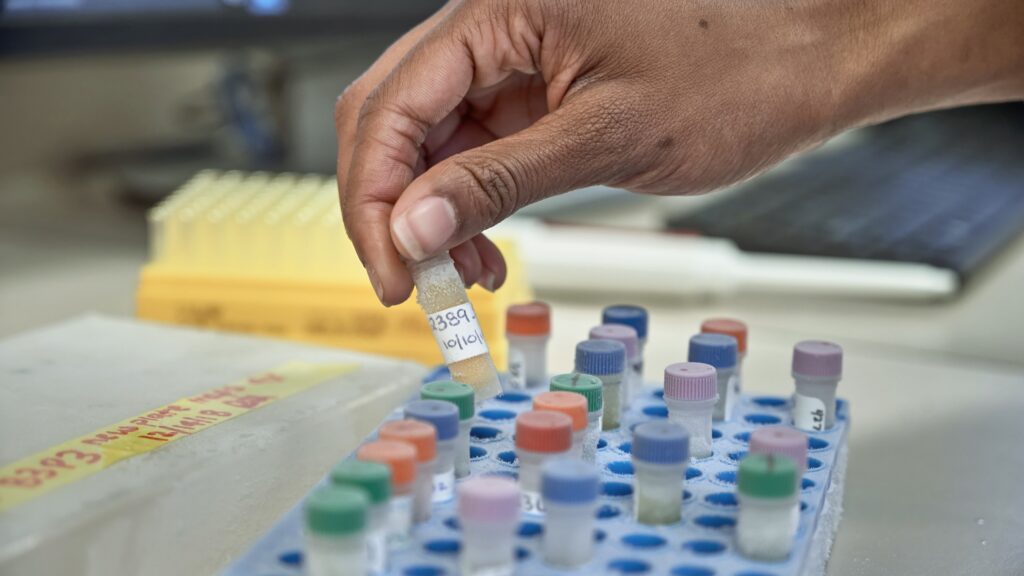Exercise and Endocrinology Laboratory (E2 Lab)
The endocrine system is complex and encompasses several major hormonal axes that influence the physiological function of a myriad of tissues. Since the synchrony of these systems is vital for understanding the pathology of disease, our lab is interested in the analysis of hormonal profiles and the potential utility of heart rate variability as a non-invasive indicator of endocrine influence. The E2 lab is also interested in cardiometabolic risk factor development across the lifespan, especially during the transition from adolescence to young adulthood. During this time frame two major life changes usually occur; the adolescent leaves home and also begins the transition to full time work. These transitions represent increasing independence for young adults and are critical times for the development of lifelong patterns of health behaviors, such as sleep, exercise and diet. We are interested in understanding the influence of early childhood self-regulation on the development of cardiometabolic risk and health behaviors during this crucial transition period.
LINES OF RESEARCH
Exercise-induced alterations in the HPA axis
Most of the work related to this line of research focuses on growth hormone (GH) and insulin-like growth factor-I (IGF-I). This line of research seeks to explicate the differences in the responses of these hormones to various types of exercise and how this response may be sexually dimorphic, thus contributing to sex differences in lean body mass and fat mass. This line of work has included studies in the following areas; gene expression alterations in GH, IGF-I and related pathways in response to acute exercise, the effects of sleep deprivation on the HPA axis and the effect of acute high intensity interval (HIIT) exercise and HIIT training on the HPA axis. Recently, we have expanded our interest to cortisol, the cortisol awakening response and cortisol responsiveness to sleep deprivation (collaboration with Dr. Jenny Etnier & Dr. Louisa Raisbeck), training and acute exercise.
Cardiometabolic risk factor development
This work reflects an interdisciplinary collaborative research project that spans the life cycle from early childhood through adulthood. This project is currently funded through NICHD [RO1 “Pathways from childhood self-regulation to cardiovascular risk in adolescence”], and includes faculty from 3 other departments at UNCG [Nutrition, Psychology and Human Development & Family Studies] as well as a faculty member at the University of Zurich, Switzerland. This innovative project examines the trajectories from childhood self-regulation to health behaviors and cardiometabolic risk factor development in adolescents. The extensive state-of-the-art measures of self-regulation collected on this longitudinal cohort since age 2, combined with a diverse collection of indicators of cardiovascular risk in adolescents (traditional and non-traditional), allows this study to begin one of the first fine-grained analyses of the role of self-regulation in health behavior choices [diet, exercise, sleep] and cardiometabolic risk in adolescents. Our lab is interested in cardiometabolic risk factors as young adults transition to college or the workforce and live independently for the first time. We have also investigated cardiometabolic risk factor prevalence and development in postpartum women and high-risk segments of the population, such as long-haul truck drivers and pre-diabetic individuals.
Heart rate variability as a non-invasive indicator of endocrine alterations
Heart rate (HR), heart rate recovery (HRR) and heart rate variability (HRV) are influenced by many factors, including fitness, body composition, neural inputs and hormonal inputs. Our lab is interested in the use of HRR and HRV as indicators of training load, overreaching and overtraining, specifically as reflections of changes in endocrine function in athletes. We are also interested in how HRV may change with inflammatory biomarkers. Lastly, we are interested in investigating the potential synchrony of hormonal profiles and HRV by investigating non-linear analysis and metrics such as approximate entropy (ApEn) and cross ApEn. This work may eventually allow the use of HRV as a non-invasive indicator of endocrine alterations in response to exercise and disease progression.
Endocrine influences on ACL injury risk
This research is a collaboration with Dr. Sandy Shultz from the Applied Neuromechanics Laboratory (ANRL). This long-term collaboration developed out of my interest in sex-specific differences in exercise-induced hormonal responses. This line of research investigates the role of sex-steroid hormones, as well as novel biomarkers such as relaxin-2, in the pathology of anterior cruciate ligament injury. Specifically, this line of research has probed menstrual cycle influences on joint laxity and the potential role of different genes on collagen, collagen turnover and joint laxity. This collaboration has expanded to include an inter-institutional relationship with Penn State and University of Pennsylvania in the area of menstrual cycle variations in relaxin-2 and alterations in knee laxity.
The role of biomarkers in cognition
This line of research is a collaboration with Dr. Jenny Etnier from the PAC Laboratory and investigates the role of biomarkers, such as brain derived neurotrophic factor (BDNF) and irisin (FDNC5), in the cognitive benefits related to exercise. This line of research has investigated the changes in biomarkers and cognition in response to chronic exercise training in individuals at genetic risk for Alzheimer’s disease (PAAD Study). We have also investigated the influence of acute exercise and alterations in exercise intensity on cognition and BDNF.
EQUIPMENT
